Snakes are some of the most frequently observed animals around us and we are fascinated by them; you might think we’d be pretty good at identifying these common reptiles by now. That’s not the case.
In Georgia alone (where I live), you can find more than 40 different species of snakes and they come in a wide variety of shapes, sizes, and habits. But regardless of their true identities, many snakes are likely to be mistaken for just a handful of widely-known species, like the copperhead and the cottonmouth.
I think there are a couple different explanations for this phenomenon. For one, copperheads and cottonmouths benefit from high name recognition, much more so than, for example, the southeastern crowned snake or striped crayfish snake. Also, many people tend to err (or panic) on the side of caution and believe that just about any snake they see is a venomous one. Coral snakes are pretty distinguishable, and so are rattlesnakes (thanks to their rattle), so cottonmouths and copperheads represent the only other potentials when it comes to venomous snakes in the United States.
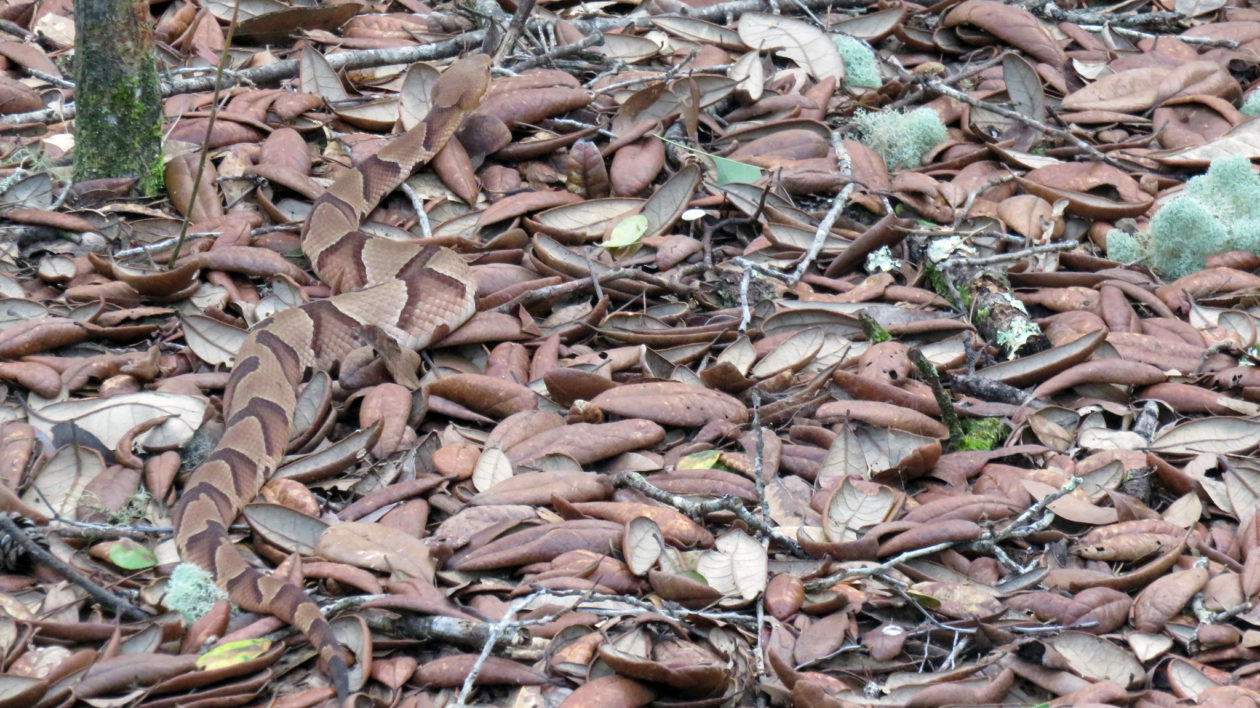
I’ve been called the Best Biologist on Twitter because I spend a lot of time there identifying snakes for people; in many cases this requires me to tell them that no, the snake they found was actually #NotACopperhead. In fact, I recently turned the most common myths and misconceptions I have heard about snakes into a book: Secrets of Snakes: the Science beyond the Myths.
In this post I am going to explain how to distinguish copperheads and cottonmouths from each other as well as from a variety of other species. As a primer, here’s how I introduce the section about snake identification in my book.
“…people are always asking me for shortcuts when it comes to identifying snakes, particularly when it comes to distinguishing between venomous and nonvenomous species. I understand why; it is tempting to gravitate toward quick and easy ways to learn. I know we want rules. I know we want to be able to define a venomous snake based on the shape of its head, or the way it swims, or the order of the colored bands on its body.
But nature is too complicated and messy for reliable shortcuts. We can talk about general patterns, but these are just rules of thumb and may not even be relevant depending on what snake you are looking at or where you live….
I like to make the analogy that recognizing snakes is a lot like recognizing family and friends. You would not measure the length of Uncle Michael’s mustache to figure out who he is or examine the color patterns of Aunt Rochelle’s highlights before you gave her a hug; you just look at them and you know who they are! Identifying animals is similar; once you know them well enough, you can recognize them at a glance. Focusing on specific features may be helpful when you are first learning your snakes, but they should be considered only one step toward achieving the ability to identify them.
Another important thing to consider is that Uncle Michael’s mustache is probably useful for telling him apart from Aunt Rochelle, but it is not a useful tip for distinguishing him from all the other people in the world. It’s the same for snakes: some tips may be useful for distinguishing between two specific species, but that same tip may not be useful for distinguishing a snake from all other species.”*
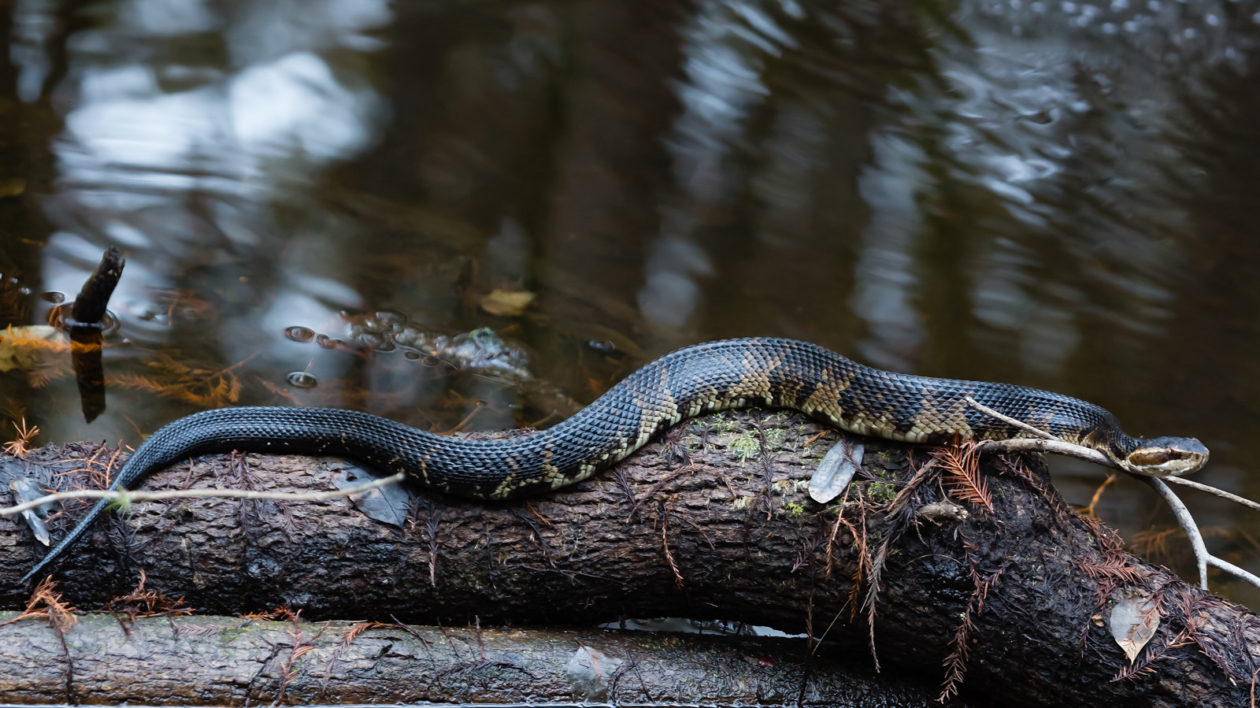
Cottonmouth or Copperhead?
Given my general philosophy on snake identification, let’s take a look at cottonmouths (Agkistrodon piscivorus) and copperheads (Agkistrodon contortrix) because these two species are frequently mistaken for each other.
They are closely related so they have a lot of things in common, like vertical pupils and heat-sensing pits, two features that can help distinguish them from the variety of non-venomous snakes discussed below.
For one, both species have relatively similar patterns. Copperheads have a color and pattern that has been described as Hershey Kisses in chocolate milk, although there is some variation (some appear almost orange) and in the western portion of their range the Hershey Kisses get broad and lose their characteristic shape.
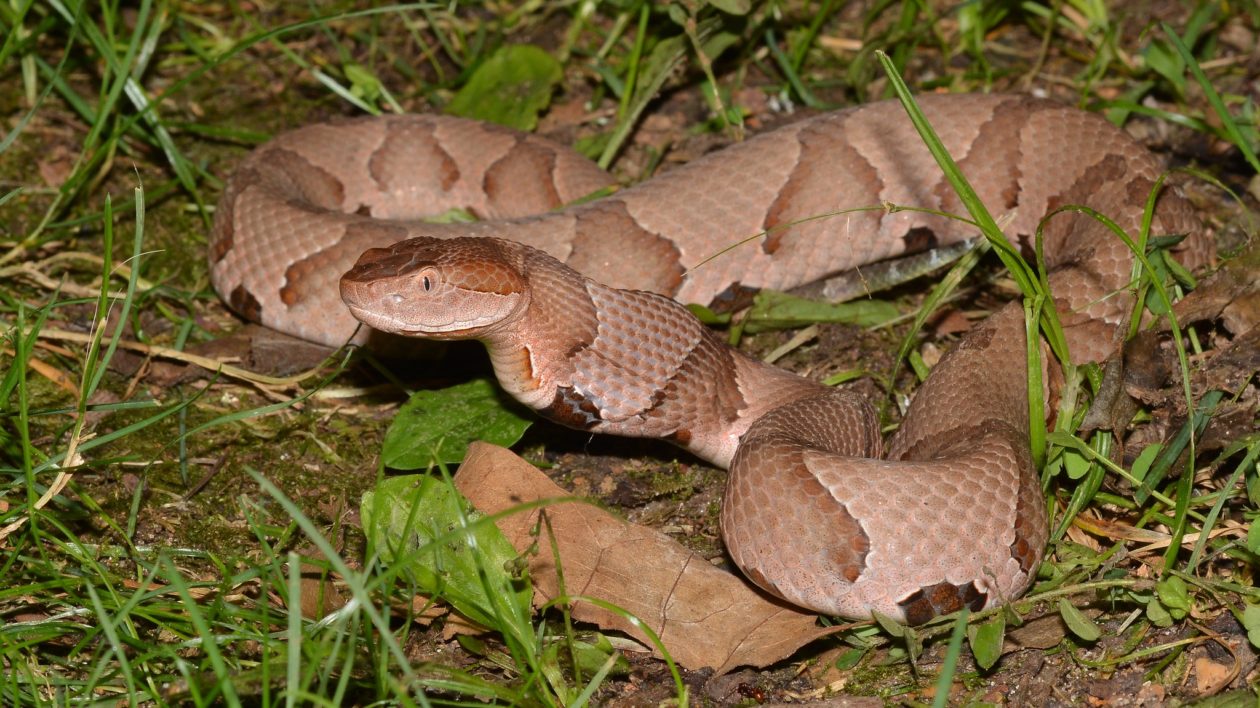
Cottonmouths have a similar pattern, but it’s messier. The kisses aren’t well-defined and there are likely to be spots and blobs all over. Here’s an interesting bit: when cottonmouths and copperheads are babies they look very similar; the pattern is very distinct and striking and they both have yellow or green tail tips.
Over time, cottonmouths lose their distinct pattern and usually become uniformly dark snakes by the time they’re big adults. On the other hand, copperheads keep their patterning throughout their life. Another way to tell the difference between these species is to look for a dark bar running through the eye: cottonmouths have it, copperheads don’t.
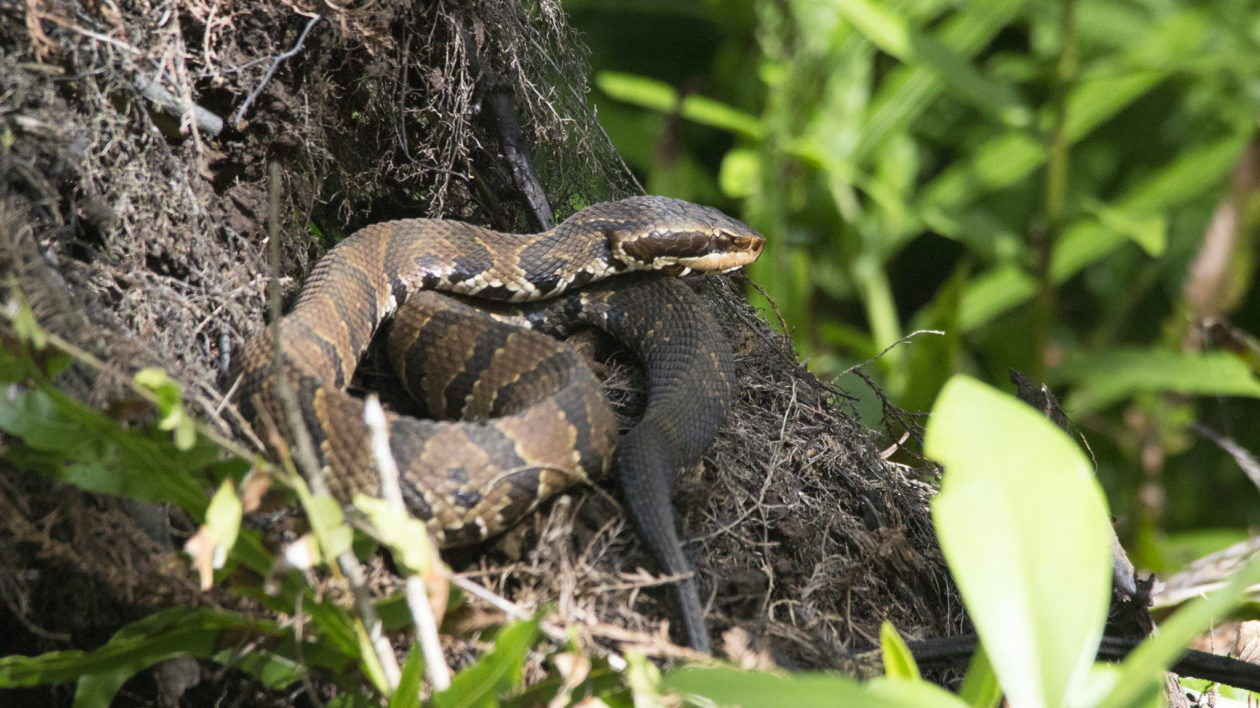
If you’re still wondering whether the snake you’re looking at is a cottonmouth or a copperhead, you can check whether you are within the geographic range of either species.
For example, cottonmouths range throughout much of the southeastern United States west to central Texas and north to southern Illinois. If you live somewhere else, like New England, the snake you saw probably wasn’t a cottonmouth (no matter how much your neighbor insists there are lots of moccasins around).
Copperheads, on the other hand, range throughout much of the eastern and central United States (but not extremes, like Maine and the Florida peninsula) west to Texas and a bit of northern Mexico.
There are a few common species that are frequently mistaken for either copperheads or cottonmouths, but before we get into how to distinguish them, a word of advice.

Beware the Rules of Thumb
You’ve already learned the ground rules to avoid misidentifying animals in a previous Cool Green Science blog, and they all apply here too. But snakes add a layer of complexity: venom. There are tons of tips out there (and in here) to help you distinguish venomous snakes from those that are harmless; not all of them are particularly helpful.
For example, many people will tell you that pit vipers (like cottonmouths and copperheads) have a triangular or diamond-shaped head. But, this is relative; you need to have looked at a lot of snake heads to know which are relatively triangular and which are not.
Also, lots of non-venomous snakes flatten out their body and neck when they are feeling unsafe, this makes their heads look very triangular!
If you really want to learn how to identify snakes, I recommend getting a copy of Peterson’s Field Guide to Amphibians and Reptiles and go through the process of trying to identify every snake you find (you can do this for pictures you find online too). Note that there is a separate version for the western United States.
Over time, you will start to get a feel for the different species. I also suggest that anyone interested in learning how to recognize snakes join the Snake Identification Facebook group and watch snakes get identified in real-time. It won’t be long before you start identifying them too.
Okay, with these caveats aside, let’s start with the copperheads, which are often confused for a wide variety of species.

Copperhead or Common Watersnake?
At first glance, common watersnakes (Nerodia sipedon) look like they have a similar pattern to copperheads, but look closer. The Hershey Kisses are upside down.
These shapes look more like saddles. As you might expect from their name, watersnakes spend a lot of their time in the water; copperheads rarely do.
So, if you see a snake swimming around or even submerged, remember that this is snake is more likely to be a watersnake than a copperhead.
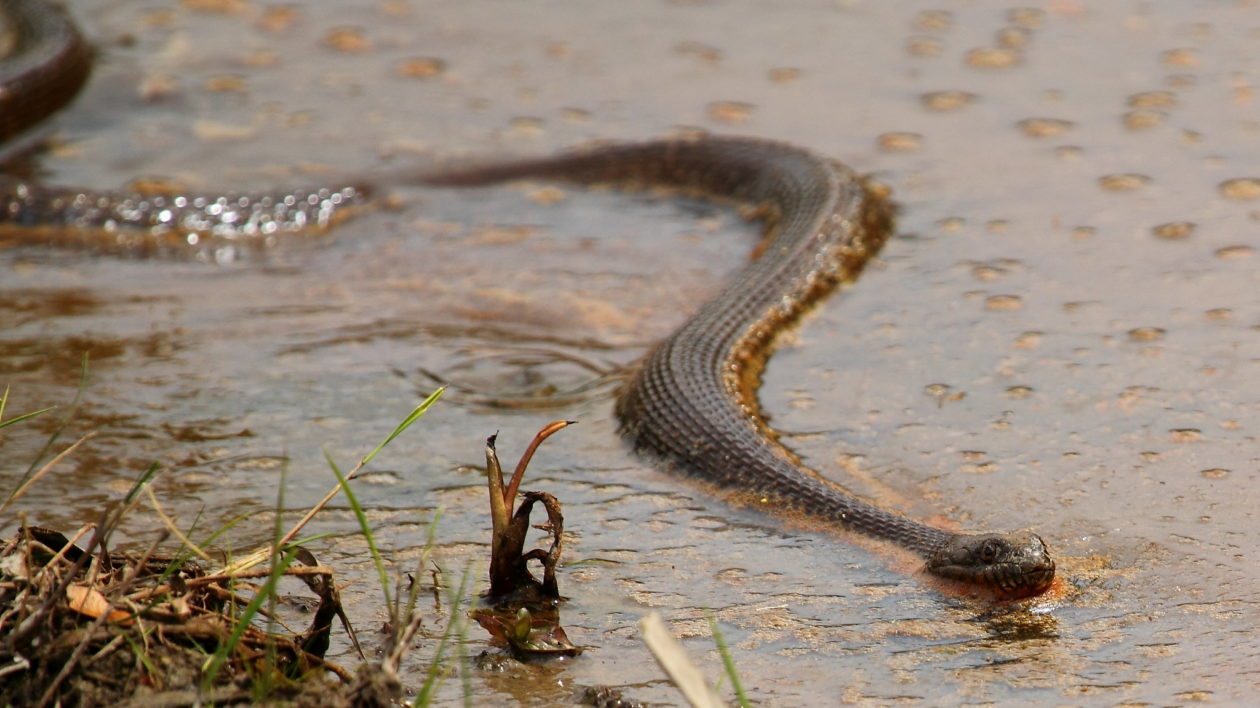
Copperhead or Dekay’s Brownsnake?
Dekay’s brownsnakes (Storeria dekayi) are small snakes found throughout the eastern and central United States. Because they are tiny (under a foot long), can appear almost uniformly light brown, and do not have noticeable distinguishing features, many people do not recognize them and assume they are baby copperheads. Nope!
As we’ve already learned, copperheads have a distinct banding pattern and Dekay’s brownsnakes don’t. They typically appear light brown or tan; depending on where they live, they could have faint lines or a checkered pattern (similar to that of a garter snake).
Dekay’s brownsnakes also sometimes have a head that is a bit darker than the rest of their body.
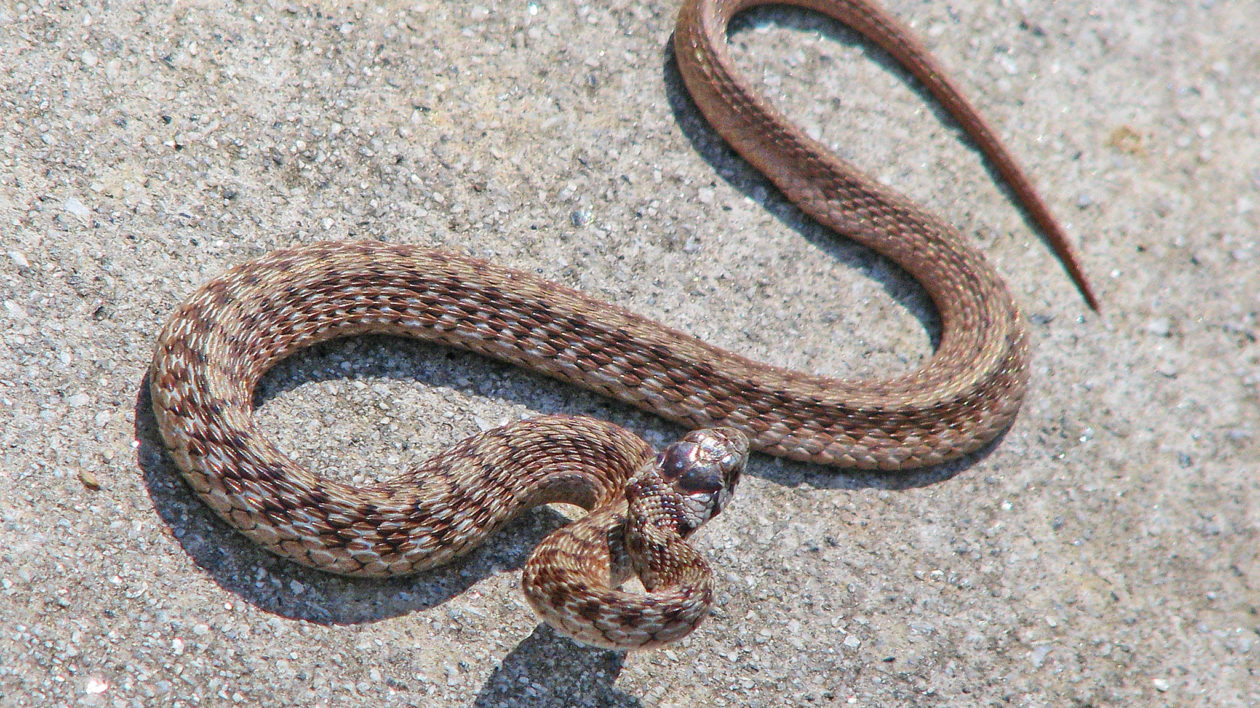
Cottonmouths or Watersnakes?
In contrast to copperheads, cottonmouths frequently hang out in or near water. So, as you might expect, they are frequently confused with watersnakes (non-venomous snakes in the Nerodia genus). As I mentioned above, cottonmouths have vertical pupils and a relatively triangular head, while watersnakes in general do not.
Southern watersnakes (Nerodia fasciata) have a huge geographic range throughout the southeastern United States and their color and pattern can vary significantly across that wide region. So, if you haven’t gotten a feel for this species yet, remember that cottonmouths usually appear relatively bulky for their size, while southern watersnakes are relatively slender.

Plain-bellied watersnakes (Nerodia erythrogaster) are relatively slender too, but do not have the distinct markings that most southern watersnakes do. Rather, they are uniformly dark on the top and uniformly bright on their bellies, they can be bright yellow or red depending on where in their range you might find them.
In the western portion of their range, like in Oklahoma or Texas, plain-bellied watersnakes may have a faint pattern on their back that looks somewhat like a series of blocks.
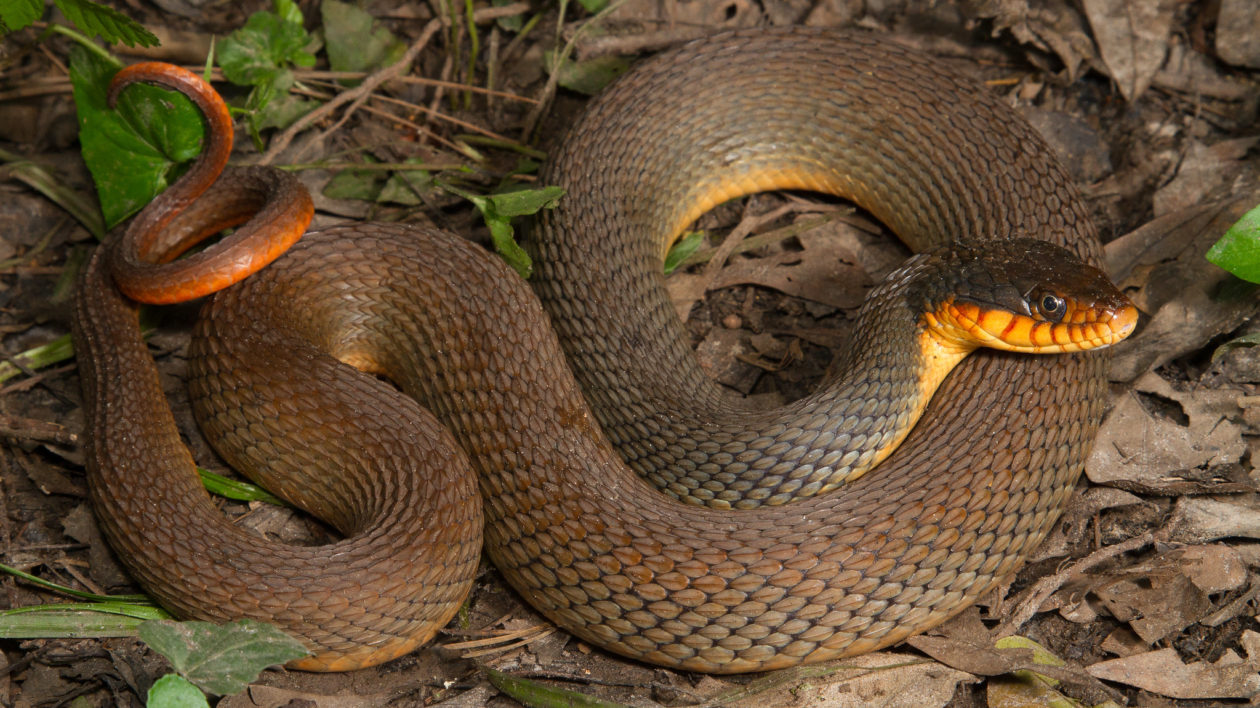
Brown watersnakes (Nerodia taxispilota) can get quite big and bulky, more so than other watersnakes we’ve discussed already, so if relative bulkiness was the only tip you had to recognize cottonmouths, then you are likely to mistake a brown watersnake for one from time to time. But, brown watersnakes can be distinguished from cottonmouths by the square brown blotches they have along their body.

Interestingly, brown watersnakes often bask in bushes and branches over streams and rivers and plop into the water when they are feeling scared; this is likely the reason many people believe the myth that cottonmouths will drop into your boat when you are paddling by, another legend that I thoroughly cover in my new book.
There are several more different kinds of watersnakes, but I think you probably get the gist of how to distinguish them from cottonmouths by now.
Now that you know how to recognize copperheads and cottonmouths as well as a few of their reptilian brethren, go find some! In my opinion, why go bird watching when you can go looking for snakes?
Adapted with permission from Secrets of Snakes: The Science Beyond the Myths by David A. Steen, Published by Texas A&M University Press
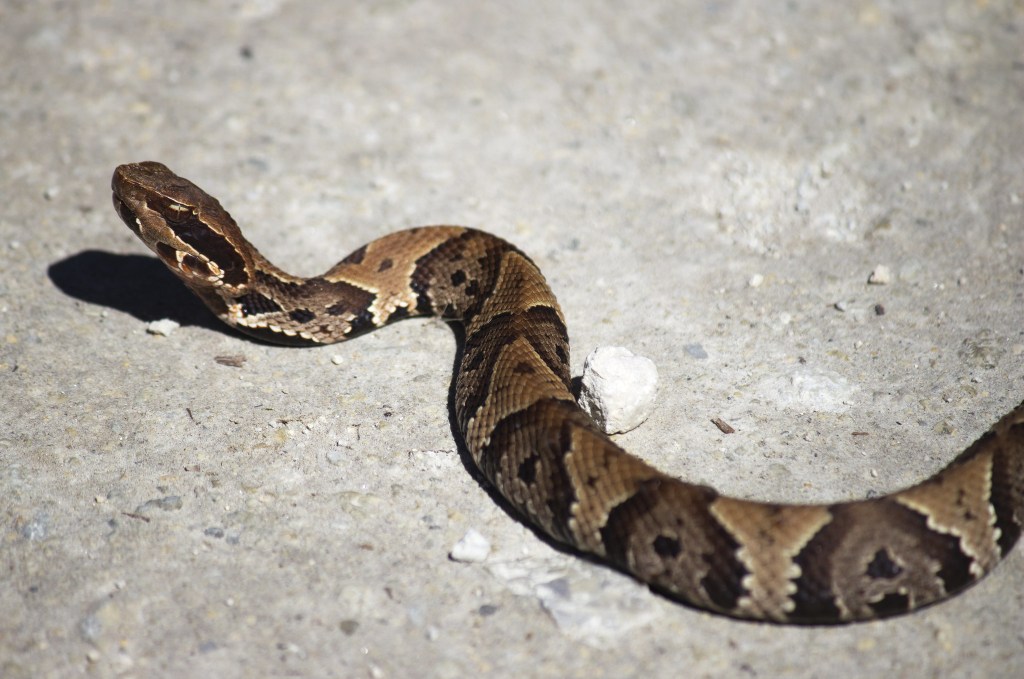

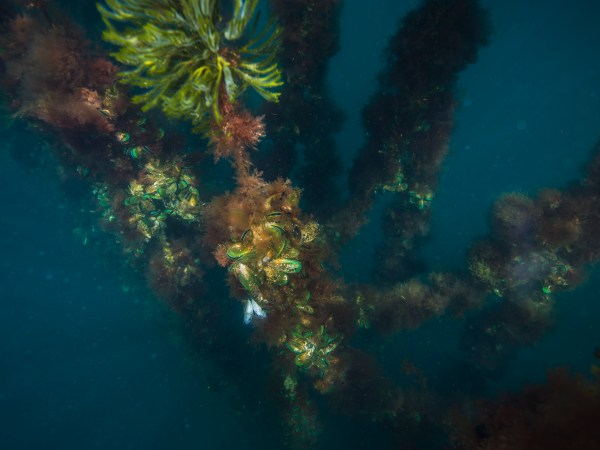

Can you identify this baby snake I found?
Found a baby snake in basement. Black with a white ring around it’s neck.
I don’t see how you can say the snake in the above picture with square block pattern on his light brown body is a brown watersnake.
I can see a triangular head with the right side looks disfigured. He also has pits on either side of his nose.
So to me the snake could pass for a cottonmouth.
You could say the body color isn’t right 2b a cottonmouth. But the triangular head & the pits on either side of his nose is a poisonous snake.??? I can’t see his eyes very well. The picture is not very well defined.
I remember the cottonmouths coloration used 2b all solid gray body. From the pictures I saw as a young child. I don’t forget easily. Snakes to me are fascinating. Always been fascinated with them ever since. I’m always seeing dead snakes on the road. Hardly ever see healthy ones anymore.
I know there are people who don’t like snakes (either they’re scared(phobia) of them or they were taught to hate them. They do have their purpose in this life. God created them. That could be a 3rd reason why people (Christians) don’t like them b/c snakes represent the devil or Satan.
The snake tempted Eve & we’ve been in trouble ever since.
They are “FREE” pest control, SO
Did the solid gray cottonmouths go extinct?
Now the cottonmouths color is different than I remember. The cottonmouths must have crossed with another species of snake to come up a different coloration and say it’s a cottonmouth. That’s the only thing that makes sense.
They used 2b solid gray, that’s how I remember the cottonmouth species.
I have heard that the different types of snakes don’t cross breed.
I don’t know how true that concept is or not.
With what I just said, I remember the solid gray cottonmouths being what they were……….they would have had to cross with a different breed to come up with “what they ” NOW” call a “COTTONMOUTH”.
It would have had to cross breed.
On May 8th of 2021, I saw a healthy mating pair of copperheads, I was within striking distance, but he was so much n2 her, he wasn’t interested in me. The female was a gray hour glass pattern & he was that beautiful copper color.
It took me a little while to figure out which was male and female . He was making nudging movements with his head against her body and then I knew which was male(copper color) & she(gray color). They had not finish the copulation process. I left them alone after I decided not to kill them. They have every right to live just like all the other critters.
I’ve seen in my house garage a very young a shiny blck snakeup on the ledge of the electric garage door. Saw him at nite when I turned on the light. Then saw a baby rat snake caught on a sticky trap meant for mice.
Had to carefully pry him off with dinner knife, so as not to injure him.
I see more males than females. Except for that Saturday afternoon seeing the pair of copperheads.
I know snakes aren’t suppose to be pretty or beautiful but their coloration are as such.
Also knowing that males have longer tails than females.
I do my research til I know for sure to tell between the sexes, color, the tails(longer or shorter), & any other distinctions between the two. Also the differences of POISONOUS and non- poisonous ones.
But the above is perplexing.
Thank you for letting me leave a comment.
I don’t do Facebook.
I would like to send you a picture of a snake I had in my house he was on a ladder that I was bringing in to paint the walls , he was 7’ long didn’t act aggressive he was light brown with black lines head to toe , I am in central florida west coast
Snakes are a unique & distinct genera of reptiles.They are cosmopoliton & & most famous because of their venomity .But,their beautiful natural diversification on basis of variant body color & it’s natural artistic pattern make them charmful
The only snake that ever attacked me for unknown reason was a big Yellow Bellied Water Snake at night. This was in the Southern Tip of Illinois in the Shawnee Forest. My then BF and I were walking around a sewage treatment pond, when the snake flew out of the vegetation, wrapped itself around my bare leg, and biting me. We did not have a flashlight with it. So I walked back to camp with the Snake so we could make sure it was not a venomous one.
I lived in Alabama until age 18 and I’ve seen cottonmouth moccasins. Later I moved to Nelson County, Virginia where I saw a large dark snake with a striking white mouth lying in a shallow creek. I assumed it was a cottonmouth. Note that the Rockfish river runs through this land and drains into the James.
Recently an acquaintance assured me that this could not possibly have been a cottonmouth because it was outside of the known range (by two counties).
What would you say?